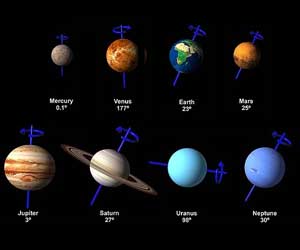|
|
Herlev, Denmark (SPX) Aug 27, 2010 The Danish high-tech company Terma is to head a European space project with the objective to take measurements and make observations from the International Space Station (ISS). The research project ASIM - The Atmosphere Space Interactions Monitor - is an observatory that in 2014 will be placed at the exterior of the Columbus module of the European part of the ISS. ASIM will monitor and take images of the high altitude lightning that is discharged from thunderclouds towards the conductive ion ... read more |
. |
|
|
Free Space, Earth, Energy And Military Newsletters - Delivered Daily |
| . | . |
 Ready for 'Danes in Space'? | .. |
 Richest Planetary System Discovered | .. |
 NASA prepares for asteroid rendezvous | .. |
 Astronauts' brains 'tricked' for training | .. |
 The Mutating Mars Hoax |
| .. |
DLR Develops Custom Flight Control System For SHEFEX II Bonn, Germany (SPX) Aug 26, 2010
Bonn, Germany (SPX) Aug 26, 2010Unlike its predecessor, the experimental sharp-edged spacecraft SHEFEX II (SHarp Edge Flight EXperiment) will be actively controlled during its re-entry into the atmosphere. The German Aerospace Center has developed a custom aerodynamic flight control system for SHEFEX II, which will be used to control the craft as it returns to Earth. At the heart of the canard control system, developed b ... more British bacteria are hardy space travelers  London (UPI) Aug 23, 2010
London (UPI) Aug 23, 2010 Bacteria from cliffs on the south coast of England have proved themselves hardy astronauts, surviving a year and a half as space travelers, researchers say. Taken from the cliffs near the small fishing village of Beer in Devon, the bacteria were placed on the outside of the International Space Station to see how they would deal with harsh conditions in Earth orbit, the BBC reported. ... more SETI search may be seeking wrong target  Santa Clara, Calif. (UPI) Aug 23, 2010
Santa Clara, Calif. (UPI) Aug 23, 2010 The search for extraterrestrial life might have more luck listening for sentient machines than for sentient beings, a prominent researcher in the field says. SETI, the Search for Extraterrestrial Intelligence, has until now sought radio signals from worlds like Earth, but lead SETI astronomer Seth Shostak argues the time between aliens developing radio technology and moving on to artifi ... more |
.. |
 Researchers Explore Physiological Effects Of Space Travel  Astronauts Stay Strong With Help From SolidWorks  Instant online solar energy quotes Solar Energy Solutions from ABC Solar |
.. |
|
|
Free Space, Earth, Energy And Military Newsletters - Delivered Daily |
|
|
. |
 Weighing The Planets, From Mercury To Saturn
Weighing The Planets, From Mercury To SaturnBonn, Germany (SPX) Aug 24, 2010 An international research team led by David Champion, now at Max Planck Institute for Radio Astronomy in Bonn, with researchers from Australia, Germany, the U.S., U.K. and Canada, has come up with a new way to weigh the planets in our Solar System, using radio signals from pulsars. Data from a set of four pulsars have been used to weigh Mercury, Venus, Mars, Jupiter and Saturn with their moons and rings. The new measurement technique is sensitive to just 0.003% of the mass of the Earth, and one te ... read more |
| The contents herein, unless otherwise known to be public domain, are Copyright 1995-2010 - SpaceDaily. AFP and UPI Wire Stories are copyright Agence France-Presse and United Press International. ESA Portal Reports are copyright European Space Agency. All NASA sourced material is public domain. Additional copyrights may apply in whole or part to other bona fide parties. Advertising does not imply endorsement, agreement or approval of any opinions, statements or information provided by SpaceDaily on any web page published or hosted by SpaceDaily. Privacy statement |
| Previous Issues | Aug 26 | Aug 25 | Aug 24 | Aug 23 | Aug 20 |